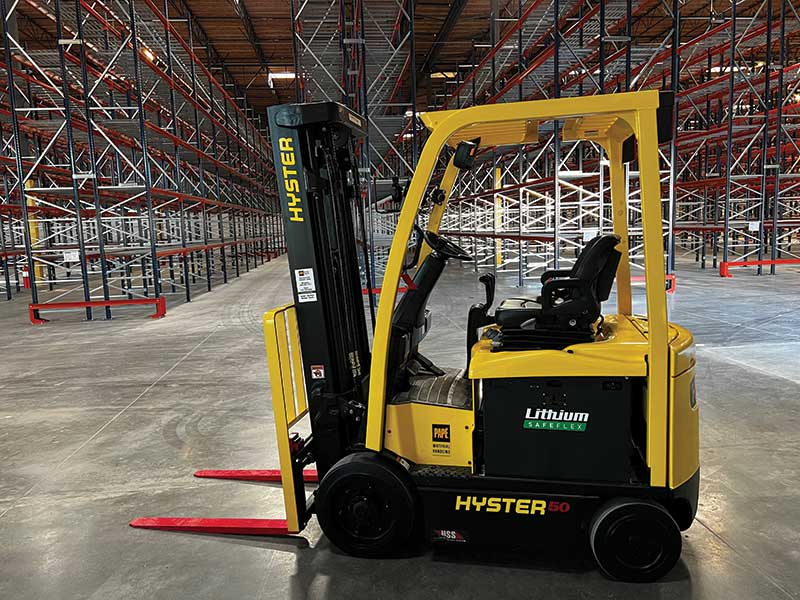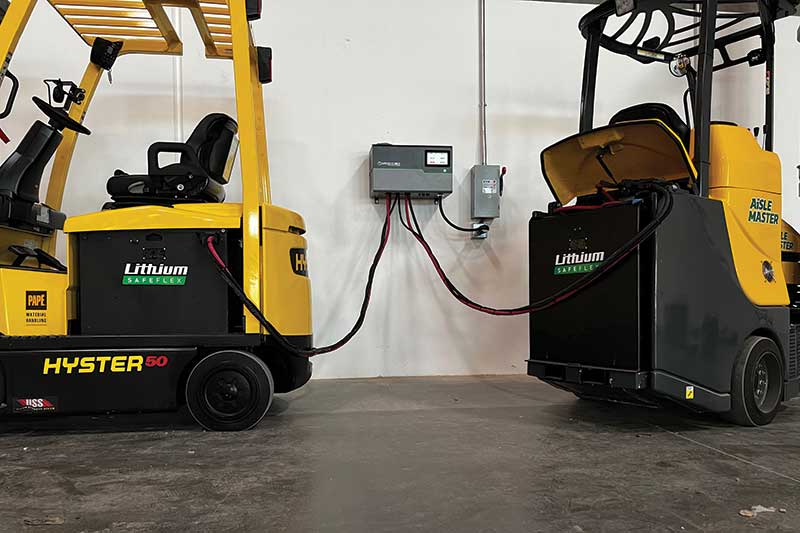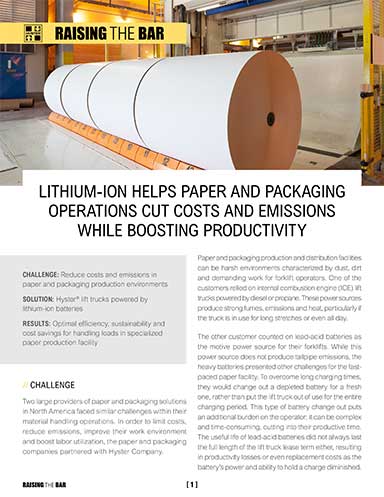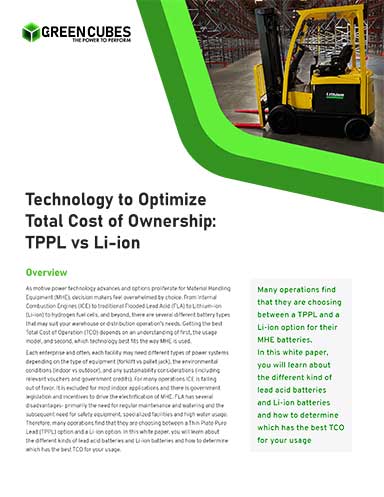Assessing the move to lithium
Making a decision on batteries for your fleet benefits from weighing all the factors under a TCO approach.
Globally, electric lift truck fleets are predicted to transition away from traditional flooded lead-acid batteries to other forms of motive power over the next several years—namely lithium batteries and to some extent hydrogen fuel cells. Market intelligence firm Interact Analysis, for instance, predicts that by 2030, lithium batteries will command close to 80% of the electric lift truck market.
For individual operations and lift truck fleets, however, the transition to lithium power may seem less clear-cut. For one thing, some fleets may gravitate to hydrogen fuel cells while thin-plate pure-lead (TPPL), an advanced form of lead-acid, offers another option. Even when just looking at lithium, there is more than one battery chemistry to consider, adding more choices.
To navigate these issues, it’s best to take a step back and assess your fleet’s power profile and needs, and then map that to the capabilities of the battery technology, using total cost of ownership (TCO) as a gauge, advises Robin Schneider, director of marketing with Green Cubes, a lithium batteries supplier.
“The best way to look at things is using a total cost of ownership model,” says Schneider. “It’s best to assess all the costs involved in motive power, including maintenance, the utility costs [meaning how much power is consumed during charging], infrastructure costs like battery rooms and eye wash stations, as well as health and safety aspects,” Schneider says. “No matter what the factor, you can boil it down to an associated cost, which helps demystify choices and look at them in a more apples to apples way.”
A good starting point, Schneider adds, is to work with your lift truck dealer or other third-party source to do a power study of your fleet to determine charging and operational needs.
A core strength of lithium batteries is that they are designed for opportunity charging during breaks that with the right-sized battery (which a power study helps pinpoint) results in a one battery per-truck operation, with no need for battery swaps as with flooded lead acid batteries or a battery room. Lithium batteries are sealed units that don’t require watering and don’t carry risks of splashing hazardous fluids, so lithium has a safety advantage and no need for eye wash stations.
The downside to lithium is the cost of the batteries themselves, and it’s significantly higher than traditional lead acid. Schneider acknowledges there is some sticker shock in looking at just battery cost, which is why motive power choices should be assessed under a TCO approach.
Another key consideration is the fleet’s profile, including how many shifts it runs and how frequently the trucks are being used in each shift. If an operation is small, runs one shift and has light-duty use of the trucks, the payback time for lithium is longer.
Another consideration is battery chemistry and cycle life, meaning how many times the battery is designed to be fully discharged and charged. A strength of the lithium iron phosphate (LFP) technology Green Cubes uses is its long cycle life, which typically results in the battery outlasting the lifespan of the truck lease or even the life an in-house owned truck.
Another lithium battery chemistry—nickel manganese cobalt (NMC)—is prized for its high energy density allowing for compact, lighter batteries, which is why NMC gets used for consumer electronics, Schneider says. But with lift trucks, where a lithium battery helps act as counterweight, energy density is less of an issue.
“LFP is well suited to materials handling applications because of its relatively longer cycle life and lifespan,” says Schneider. “LFP technology is also very safe technology. In the very rare event of a thermal failure, LFP might smoke or smolder, but it’s not going to combust.”
Different motive power choices have their strengths, Schneider adds. For example, TPPL is designed for opportunity charging, but it’s best suited for lighter-duty use patterns, rather than a high-volume DC running its trucks 24/7. Lithium technology also carries a charging efficiency savings versus traditional lead acid, in that charging a lithium battery is about 20% more efficient than charging a flooded lead acid equivalent.

Another advantage of lithium is that it provides more data insights into battery and truck usage than lead-acid, since lithium batteries have a built-in battery management system (BMS) that can communicate data directly to trucks with modern CAN-bus communications.
With lead-acid, a more limited dataset is available only by connecting into charger systems. Some lithium batteries can provide insights from Internet of Things (IoT) connectivity, giving lithium a leg up when it comes to centralized analytics over truck charging and usage patterns.
“At a fundamental level, the BMS manages and provides the safety circuity on the battery, but it also just collecting reams of data from every single cell. This enables insight not just on state of charge or temperature, but other data you can collect and use for everything from right-sizing your truck and battery assets, to seeing if a piece of equipment is being underutilized, or even comparing charging trends for batteries or fleets within your enterprise. It gives you a level of actionable information that you can’t really get with lead acid,” she adds.













